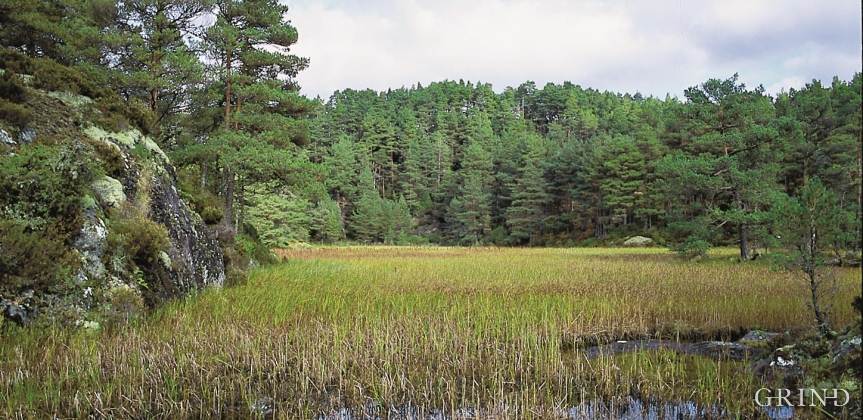Published: 25.07.2015 | Author: Anders Lundberg
BRACKISH WATER ENVIRONMENT ON VERNØYA ISLAND
If you smell a foul smell out in nature, you mustn't immediately think that the reason is cloaca from houses or cabins. The reason can be an entirely natural process that occurs when plants are broken down under special conditions. When there is little oxygen available, hydrogen sulphide can be produced. This is a gas that seeps up from the earth and smells like rotten eggs.
Vernøya Island is connected to the northeastern part of Reksteren by a bridge. Along the road a couple of hundred metres south of Enes, lies a unique area that cannot be compared with any other in the whole of western Norway. Here, the wedge-shaped Straumen Bay encroaches on the island and widens out to become a basin that today is nearly totally overgrown by marsh vegetation and plant remains. In earlier times, this basin was a bay in the fjord, but uplift of the land has resulted in total isolation from the saltwater except during spring tides or floods. This salty fjord water gets filtered through the peat that has built up over time. This means that one can find niches for both brackish-water and freshwater plants in Straumen.
Even though the basin has nearly grown in, there is still a high water level. The biggest stands of sea club rush in western Norway grow here. The plants form a continuous carpet over most of the swamp area. Grey club rush grows scattered around the edges. Both of these plants are native to brackish water environments. In the small, open pockets of water that remain, one finds clusters of widgeon weed.
The overgrowth in Straumen shows a development where nature's own dynamics are the driving force. The vegetation that first gets established around the edges of the basin, grows inwards and eventually creates a broad belt. When the plants wilt in the autumn, they consume a lot of oxygen as they break down. In periods where oxygen levels in the bottom water have been depleted, layers of partially-decomposed plant remains accumulate. This reduces the water content and raises the water temperature, so that plant production increases. This leads to even larger accumulations of plants needing to be broken down, and even larger layers of dead plant material accumulating on the bottom.
- Andersen, T. B.; Jansen, Ø. J.1987.The Sunnhordland Batholith, W. Norway: regional setting and internal structure,with emphasis on the granitoid plutons. Norsk Geologisk Tidsskrift 67:159–183
- Lundberg, A. 1992. Havstrand i Hordaland. Regionale trekk og verneverdiar. DN-rapport 2.



